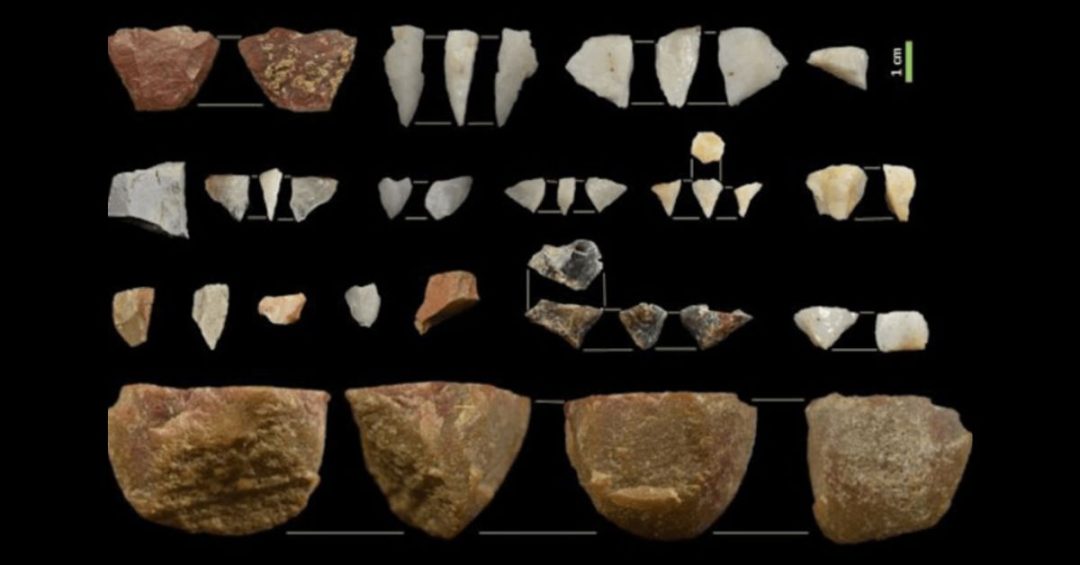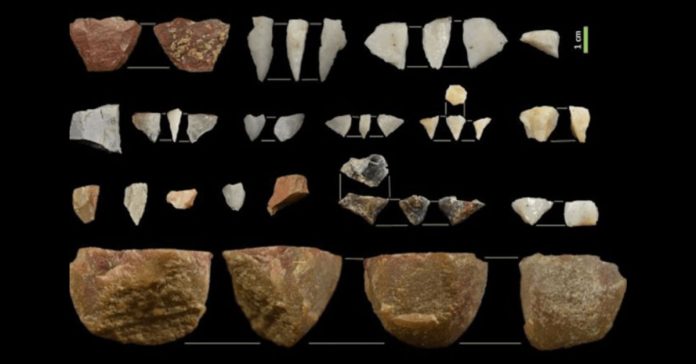Field Museum researchers uncover evidence of shared tool-making techniques across ancient southern Africa, pointing to long-distance social networks.
Southern Coast of South Africa — A team of archaeologists from Chicago’s Field Museum has uncovered thousands of stone tools in coastal caves near South Africa’s southern tip. Some of the tools date back as far as 24,000 years. The discovery, detailed in a recent Journal of Paleolithic Archaeology study, reveals advanced blade-making techniques developed during the Last Glacial Maximum. These findings offer new insights into how Ice Age humans connected, adapted, and exchanged knowledge over long distances.
The excavation was led by Dr. Sara Watson, a postdoctoral researcher at the museum’s Negaunee Integrative Research Center. It focused on caves near what would have been an inland plains region 20,000 years ago. At that time, lower sea levels had pushed the coastline miles beyond its current boundary. The area, rich with antelope and other megafauna, gave hunter-gatherers a strategic place to live and hunt.

Insight into Ice Age Stone Tool Ingenuity
The tools, crafted between 24,000 and 12,000 years ago, include small, razor-sharp bladelets and stone cores—the parent rocks from which blades were systematically chipped. By analyzing minuscule striations and reduction patterns on these artifacts, the team reconstructed the meticulous methods used to produce them. Notably, the cores exhibited a distinctive reduction strategy known as “Robberg” technology, named after the region’s caves, where tiny bladelets were precision-struck in sequences to maximize efficiency.
“The core is the storyteller,” Watson explained. “It reveals the intentionality behind each strike—a shared ‘recipe’ repeated across sites.” Strikingly, this method mirrors techniques identified in sites hundreds of miles away in modern-day Namibia and Lesotho. “The repetition of these patterns isn’t accidental. It signals a transmission of knowledge, likely through direct interaction between groups,” Watson added.
Bridging Distances, Sharing Knowledge
The discovery challenges earlier beliefs about the isolation of prehistoric communities. Similar tool-making methods across southern Africa suggest early humans communicated over long distances. This may have happened through seasonal migrations or trade networks. “Finding identical techniques in Lesotho’s highlands and Namibia’s arid regions implies these groups weren’t just surviving—they were exchanging ideas,” Watson said. Such collaboration may have been crucial for adapting to the Ice Age’s harsh, fluctuating climates.
Excavation Challenges and Environmental Context
Accessing the caves required a perilous 75-foot ascent using harnesses and a makeshift sandbag staircase. Daily, researchers hauled 50-pound equipment packs to document and extract artifacts layer by layer. “We treated each grain of sediment like a page in a history book,” Watson said, describing the use of dental tools and mini-shovels to preserve delicate strata.
During the Last Glacial Maximum, the caves overlooked grassy plains now submerged by rising seas. Watson hypothesizes the site served as a temporary camp for hunters targeting migratory herds, rather than a permanent settlement. This mobility, she argues, facilitated cross-regional connections: “As groups followed game, they carried technological knowledge with them, weaving a web of shared practices.”
Implications for Human History
The findings underscore the cognitive sophistication of Ice Age societies. “These people weren’t just reacting to their environment—they were innovating and networking,” Watson emphasized. The study adds critical depth to our understanding of cultural evolution, illustrating how collaborative ingenuity enabled survival amid climatic upheaval.
As research continues, Watson’s team aims to trace the geographic spread of Robberg technology further, probing how these ancient networks laid the groundwork for later human advancements. For now, the caves stand as a testament to humanity’s enduring impulse to connect, adapt, and thrive—no matter the epoch.

